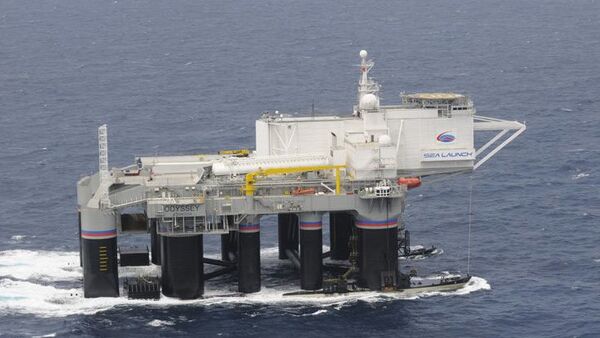LYTKARINO (Moscow region), February 26 (RIA Novosti) - The crash of a Russian Zenit-3SL rocket earlier this month was caused by defective components manufactured in Ukraine, Ivan Kharchenko, first deputy head of the Russian government's military-industrial commission, said on Tuesday.
The Zenit-3SL, carrying an Intelsat-27 (IS-27) telecoms satellite, crashed into the Pacific Ocean shortly after launch on February 1, following an emergency shutdown of its first-stage engine.
A report presented by Deputy Prime Minister Dmitry Rogozin to Prime Minister Dmitry Medvedev concluded that “the accident was caused by defective blocks manufactured in Ukraine,” Kharchenko said, adding that “there was nothing wrong with the Russian-made equipment.”
Rogozin presented his report to Medvedev on February 15, according to Kharchenko.
Russian space corporation RKK Energia head Vitaly Lopota said at the time of the crash that the malfunction had occurred around 50 seconds into the flight.
The Sea Launch consortium, led by Energia, launched the Zenit rocket from its floating platform Odyssey at an equatorial launch site in international waters in the Pacific Ocean. The rocket fell into the sea not far from the Odyssey, which was not damaged in the failed launch, a Russian space industry source told RIA Novosti.
The Zenit-3SL integrated launch vehicle is a liquid-propellant rocket consisting of three stages and a payload unit. The first stage is powered by the RD-171M engine designed by Russia’s NPO Energomash rocket engine design bureau. The RD-171M is one of the most powerful rocket engines in the world, producing 740,000 kilograms of thrust at liftoff.
Sea Launch AG was formed in 1995 as a consortium of four companies from Norway, Russia, Ukraine and the United States, managed by US aerospace giant Boeing. The project aimed to use a floating launch site to place rockets on the equator, the best possible location for launch, which gives the rocket additional speed on lift-off thanks to centripetal force caused by Earth's rotation. That, in turn, means higher possible payloads for a given power of the launcher. Sea Launch resumed operations in 2011 after a 30-month hiatus that saw passage through US Chapter 11 bankruptcy, a change in ownership from Boeing to Energia, and a move of the company headquarters from California to Switzerland.
Of the 34 previous Sea Launch rocket launches since 1999, two have failed, with a third placing its payload into an incorrect but recoverable orbit. The first failure occurred on March 12, 2000, when a software error resulted in premature cut-off of the second stage, leaving its ICO F-1 satellite unable to reach orbit. On June 29, 2004, during the launch of an Apstar 5 satellite, the upper stage shut down 54 seconds early due to a wiring fault, leaving the satellite in a lower than planned orbit. A Zenit-3SL exploded on the launch pad on January 30, 2007, after an engine failure caused by debris in the turbo pump. The payload on that flight was an NSS-8 communications satellite for SES New Skies.

